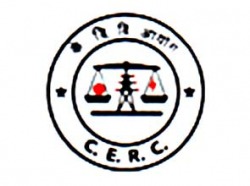
Indian mobile carrier Reliance Communications is considering a merger with South Africa’s MTN or roping in a strategic foreign investor to raise funds, the Economic Times reported on Thursday.
The No. 2 Indian mobile operator is ready to sell a stake in the company to raise funds to finance its foray into 3G mobile and wireless broadband access, the newspaper said, citing a person familiar with the plans.
At an MTN board meeting on Tuesday, the South African telecoms major decided it would examine the Reliance Communications’ merger proposal, the paper quoted the person as saying.
Officials at Reliance Communications and MTN could not immediately be reached by Reuters for comment.
Abu Dhabi’s Etisalat said on Wednesday it was looking to buy a stake in an Indian mobile operator, but did not disclose any names. A newspaper had reported it was in talks with cash-hungry Reliance Communications for a $3.8 billion deal.
Reliance Communications and MTN had planned a tie-up in 2008 but the deal was thwarted by issues within the Reliance family.
Source : Business Standard

The Central Electricity Regulatory Commission (CERC) has approved the state-run PowerGrid Corporation’s plan to set up nine High Capacity Power Transmission Corridors (HCPTC) costing Rs 58,061 crore. These transmission systems will evacuate power from various projects planned by independent power producers (IPPs).
The transmission corridors will evacuate power from IPPs in Orissa (to cost Rs 8,752 crore), Jharkhand (Rs 5,709 crore), Sikkim (Rs 1,304 crore), Madhya Pradesh and Chhattisgarh (Rs 1,243 crore), Chhattisgarh (Rs 28,824 crore), Krishnapatnam area in Andhra Pradesh (Rs 2,065 crore), Srikakulam area in Andhra Pradesh (Rs 2,986 crore), Tamil Nadu (Rs 2,357 crore) and southern region (Rs 4,821 crore).
CERC, in its order, observed that development of the corridors was considered necessary for evacuation of power from the projects envisaged during the 11th Plan.
The power shortage in the country in 2009-10, according to a Central Electricity Authority report, is 10.1 per cent in energy terms and 12.7 per cent in peak demand terms.
“The Commission, based on the report furnished by PowerGrid Corporation, which is a central transmission utility (CTU) on physical progress of Generating Units of IPPs, is satisfied that these High Capacity Transmission corridors are required for evacuation of the power from these IPPs and any delay in implementation of these transmission schemes may result in bottling up of the power,” the power regulator said.
The power projects are located either in the coal belt, or in coastal areas (which would use imported coal) or in the hydro power potential areas of the North-East. “Power from these projects has to be brought to the load centres in the northern and western regions, which requires development of transmission systems,” the power regulator added.
CERC has directed PowerGrid Corporation to ensure that the proposed transmission projects for which regulatory approval has been granted are executed within the time frames matching the commissioning schedules of the IPPs so that the beneficiaries are not burdened with higher interest during construction.
Source : Economic Times

MUMBAI | NEW DELHI: Sasol, the largest producer of motor fuel made from coal, plans to spend $10 billion in India in partnership with the Tata Group on a block awarded last year, following similar investments in Indonesia and China.
The South African company plans to produce 80,000 barrels a day of motor fuel by 2018 from a coal block in Orissa, Mark Schnell, president of the company’s Indian unit, said in an interview in Mumbai. Sasol and Tata Group own equal stakes in the venture, he said. “It’s going to be a mega project of the magnitude of $10 billion by the joint venture,” Mr Schnell said. “At this stage, the focus is on understanding the resource and making sure of the economics of building a plant here.”
Rising incomes in India are driving vehicle sales, boosting fuel demand in India. The country’s energy use may more than double by 2030 to the equivalent of 833 million metric tonnes of oil from 2007, according to the Paris-based International Energy Agency. “That is a tremendous amount of money and a project like that will become viable at very high crude prices,” said Victor Shum, a Singapore-based senior principal at US energy consultants Purvin & Gertz. “If the alternative of producing fuels from crude oil is cheaper, then a refinery would make more sense.” Sasol and the Tata Group were awarded the coal-to-liquids project in Orissa, Tata said in March last year. “We feel that this is a right step toward securing energy security for the country,” Tatas said.
Jindal Steel & Power said in March last year it was allotted a coal-to-liquids block in Orissa. The project will produce 80,000 barrels of fuel a day from coal and is estimated to cost Rs 42,000 crore, including mining and a power plant. India’s production of gasoline rose 32% to the equivalent of about 422,800 barrels a day and diesel output rose 12% to about 1.4 million barrels a day in the year ended March.
Sasol is considering increasing the capacity of a similar plant in China with Shenhua Group by 13% to 90,000 barrels a day, chief executive officer Pat Davies said. The cost of the plant with Shenhua is less than $10 billion, he said.
The South African company signed a memorandum of understanding with Indonesia for the possible development of an 80,000 barrel-a-day coal-to-fuel plant in the Asian country, Sasol said. In January 2009, Bukin Daulay, head of coal and mineral research at Indonesia’s energy ministry, said Sasol could spend $10 billion on the plant. Sasol, which produces over 40% of South Africa’s motor fuel, uses technology first employed by Nazi scientists and refined by apartheid-era engineers. The company plans to build new coal-to-fuel plants in the US, China and India.
Source : Economic Times



 RSS Feed
RSS Feed